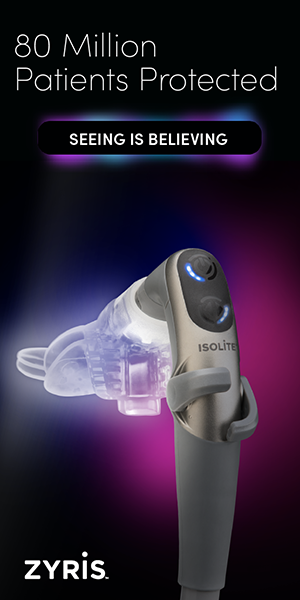Tasha Dickinson, MBA, founder and chief technologist of Siligent Technologies, discusses the growing threat, the evolving landscape, and the must-do strategies to protect your practice against cybercrime.

Q: Why should dental practice owners place a higher priority on cybersecurity?
A: Dental offices store volumes of sensitive, regulated patient data, including identification, medical histories, and insurance information. This makes them ideal targets for cybercriminals. A single breach can result in HIPAA violations, reputational damage, and significant financial losses that disrupt patient care. Cybersecurity is essential to the success and safety of every dental practice.
Q: What are the biggest cybersecurity threats facing dental offices today?
A: Any cyber threat that interferes with your ability to care for patients is serious. When that threat involves stolen or compromised data, the consequences are even greater. Patient information is often stored locally and in the cloud and accessed through digital platforms, such as imaging software, communication systems, and practice management tools. These systems, while convenient, create multiple entry points for hackers. Ransomware, phishing attacks, and data breaches are among the most common threats that can compromise operations and put patients at risk.
Q: How can dental practices protect themselves?
A: A comprehensive risk assessment will identify weak points in your network, software, and data storage. Practices should know which individuals and devices have access to patient records and implement security measures accordingly. A managed detection and response program is one effective way to monitor threats in real-time and respond quickly.
Multi-factor authentication, password managers, and limited access controls are also essential tools. These systems help ensure that team members can access the information they need while minimizing the risk of exposure by blocking unauthorized access.
Q: Can employee training prevent cyberattacks?
A: Employee training is one of the most important defenses against cyber threats. Human error remains a leading cause of breaches. Staff should know how to recognize phishing emails, use strong passwords, and protect sensitive data. Regular training sessions and security drills build awareness and encourage good cybersecurity habits.
Q: Should dental practices consider cybersecurity insurance?
A: Yes! Even with solid protections in place, no system is perfect. Cybersecurity insurance provides financial support when a breach occurs. Policies can cover the cost of ransomware payments, legal expenses, forensic investigations, HIPAA fines, data recovery, and loss of income from business interruptions. However, insurance does not replace preventive action. It works best when paired with a robust cybersecurity strategy.
Q: What are the latest cybersecurity trends?
A: Artificial intelligence is fueling a new wave of cyberattacks. Phishing emails are becoming more personalized and more challenging to detect. In response, many organizations are adopting a zero-trust model, which requires continuous verification of users and devices instead of assuming automatic access. Cloud security is also becoming a higher priority as more practices adopt cloud-based systems. In addition, we are seeing increased use of advanced endpoint protection tools and real-time threat detection. Regulatory pressures are also growing, with more healthcare providers expected to meet higher standards of data security.
Q: What steps should practices take to stay informed on cybersecurity best practices?
A: Cyber threats are constantly evolving, and staying informed is essential. Schedule regular training for all team members and conduct periodic security reviews. Working with a cybersecurity consultant or IT provider can help you stay current on new threats and technologies. Just as dental professionals complete CE to stay updated on clinical care, cybersecurity professionals stay informed on the latest tools and best practices.
Q: If a cyberattack occurs, what should a dental practice do?
A: First, isolate any affected systems to stop the attack from spreading. Next, an incident response team should be engaged to investigate what happened and assess the damage. Also, notify your insurance provider and legal counsel to begin the process of fulfilling regulatory and legal obligations. You may also need to notify law enforcement, regulatory bodies, and any patients whose data was compromised. After the breach is contained, work with your IT team to restore operations and strengthen your defenses. It is common for practices that have been attacked once to be targeted again if vulnerabilities are not fully resolved. A thorough post-breach analysis is essential to prevent future incidents.
Q: How do I choose a cybersecurity firm?
A: As the spouse of a dentist, I understand how limited time and resources can be in a dental practice. Cybersecurity solutions must be simple to adopt, easy to use, and compatible with existing systems. At Siligent, our services are designed specifically for dental practices. We provide AI-powered threat detection, HIPAA-compliance assistance, seamless IT integration, and strategies for business continuity. We take time to understand your systems and build solutions around your workflow, so you can stay focused on delivering high-quality care while we keep your practice secure.
Mrs. Dickinson, MBA, is founder and chief technologist of Siligent Technologies, a trusted provider of cybersecurity and IT solutions for dental businesses. She can be reached at tkd@siligent.com or on LinkedIn: Tasha (Sakaguchi) Dickinson.
FEATURED IMAGE CREDIT: Pete Linforth from Pixabay.




